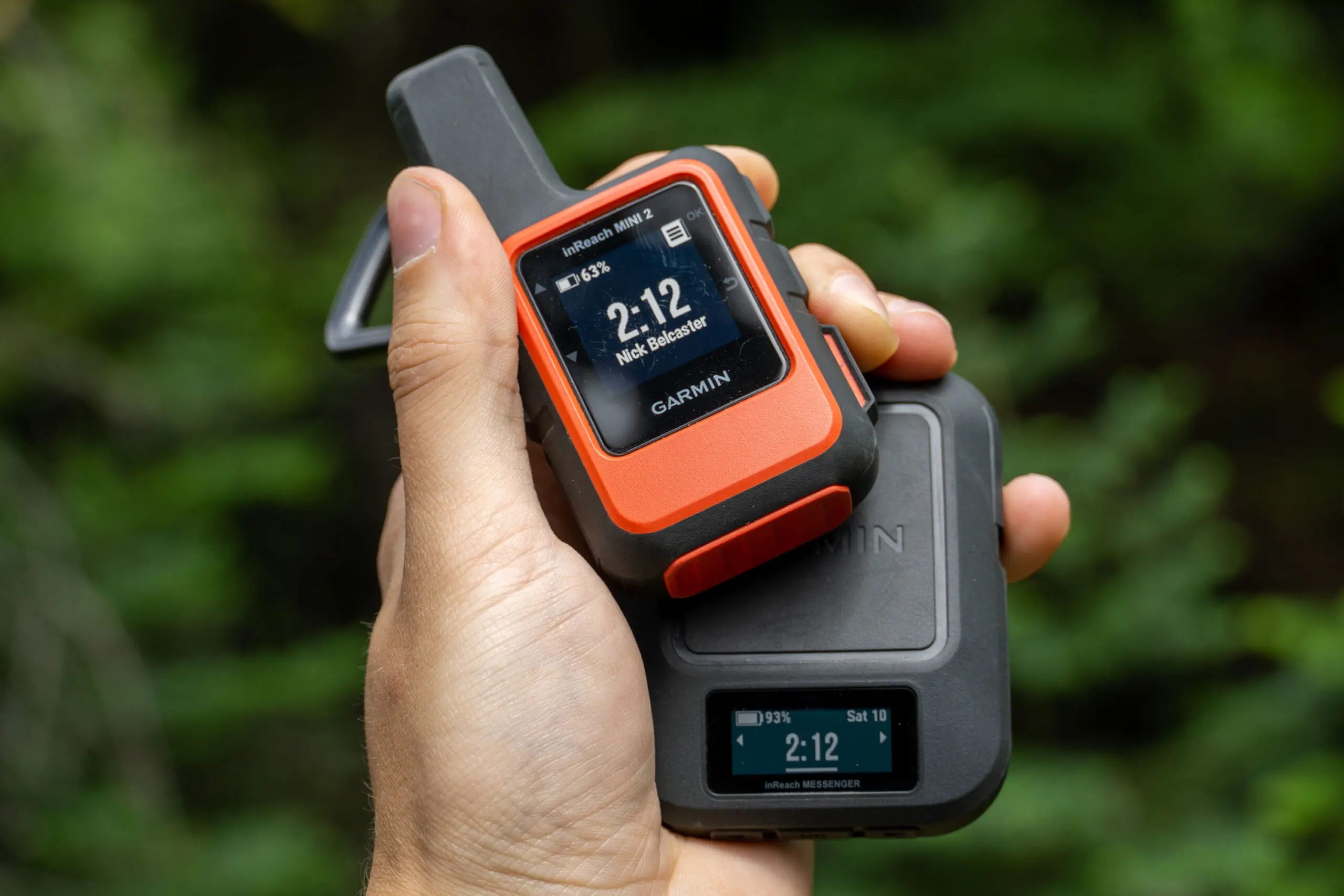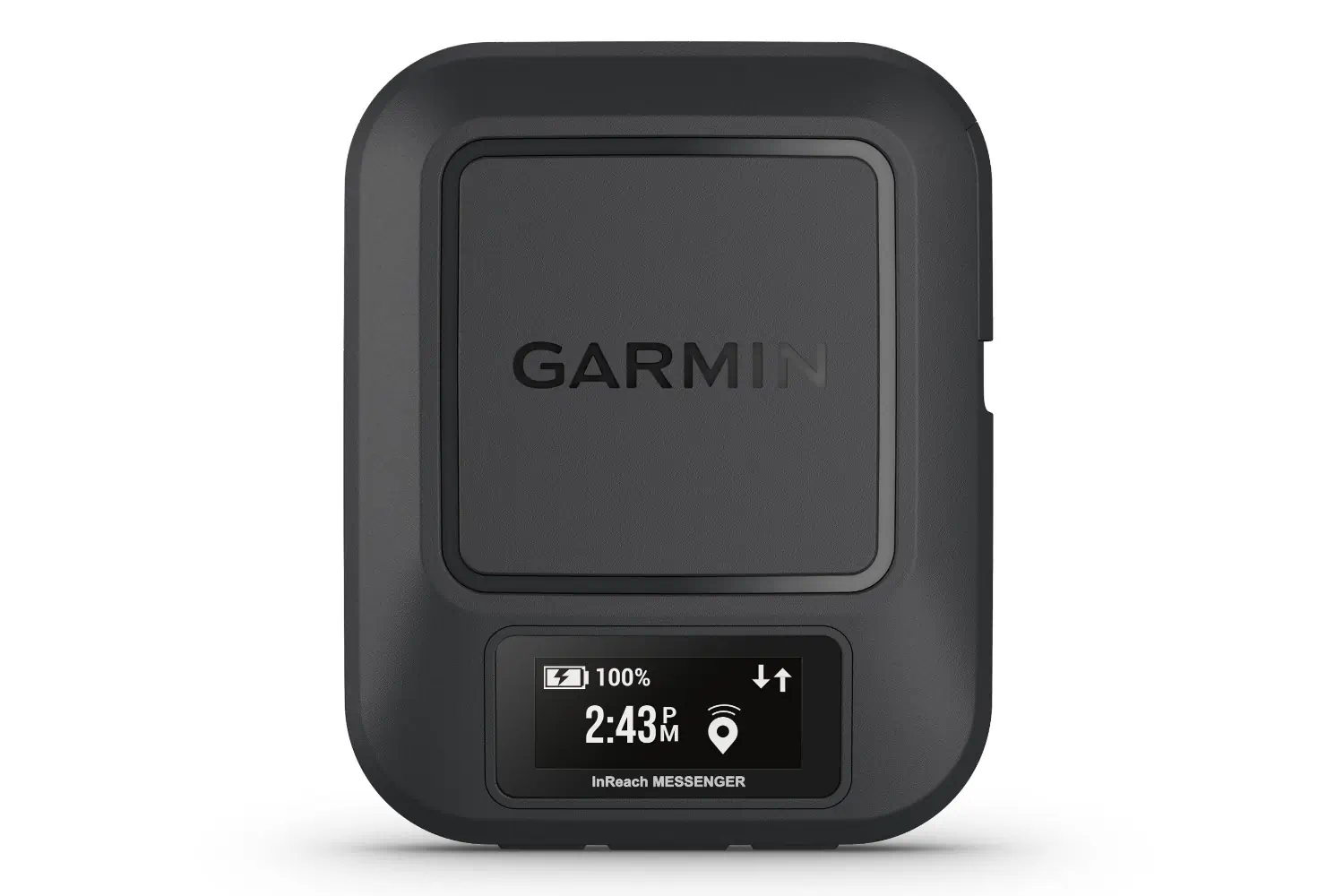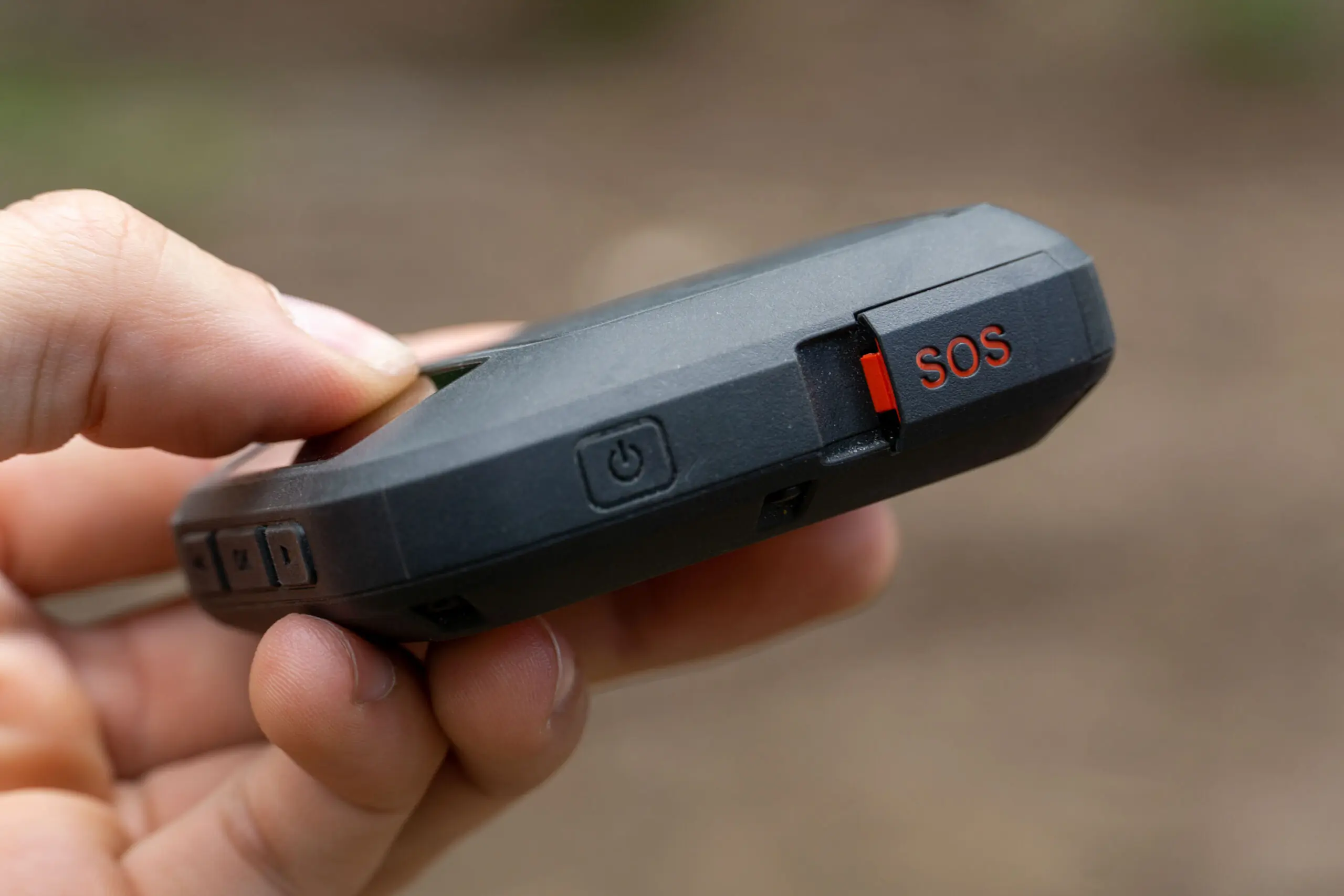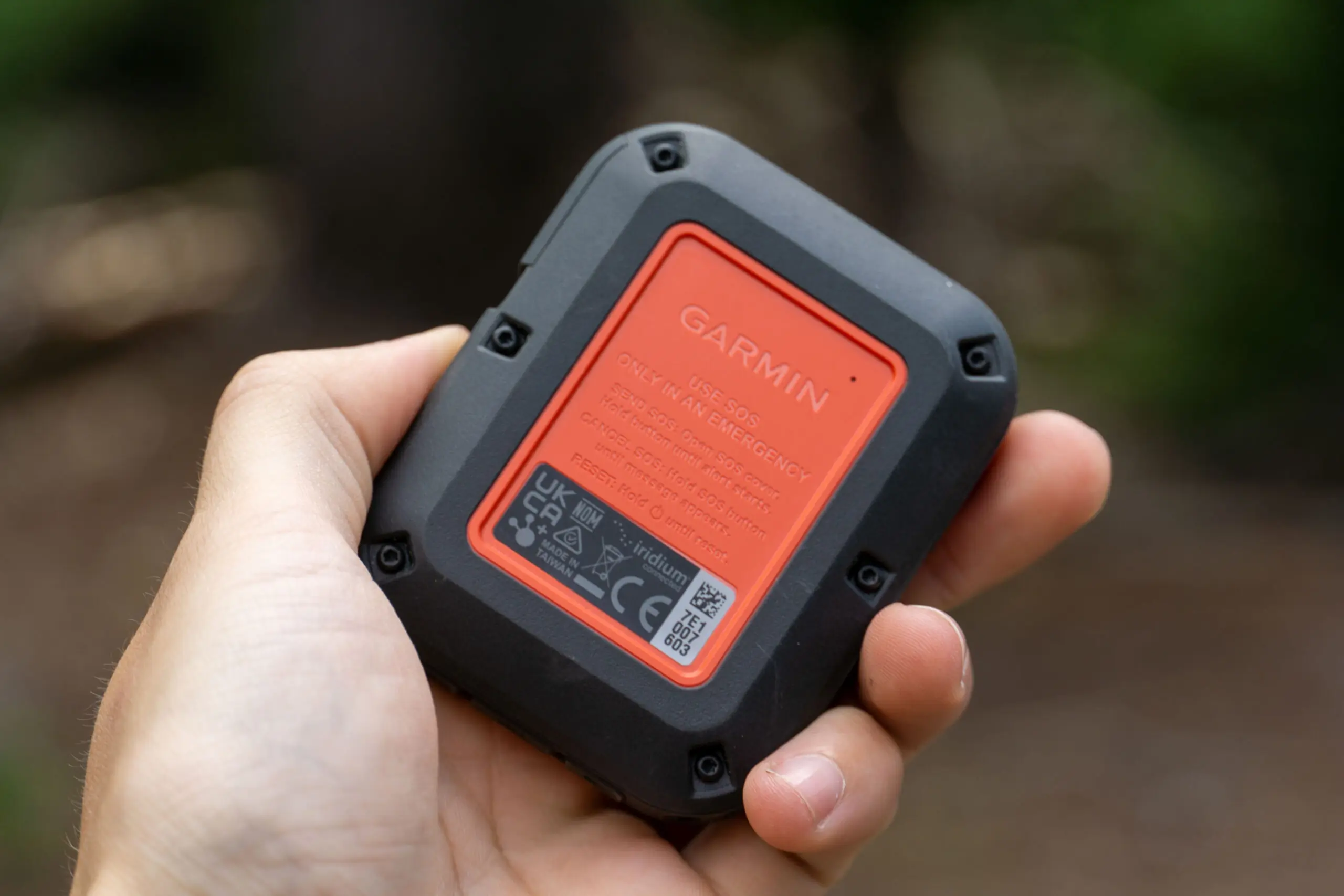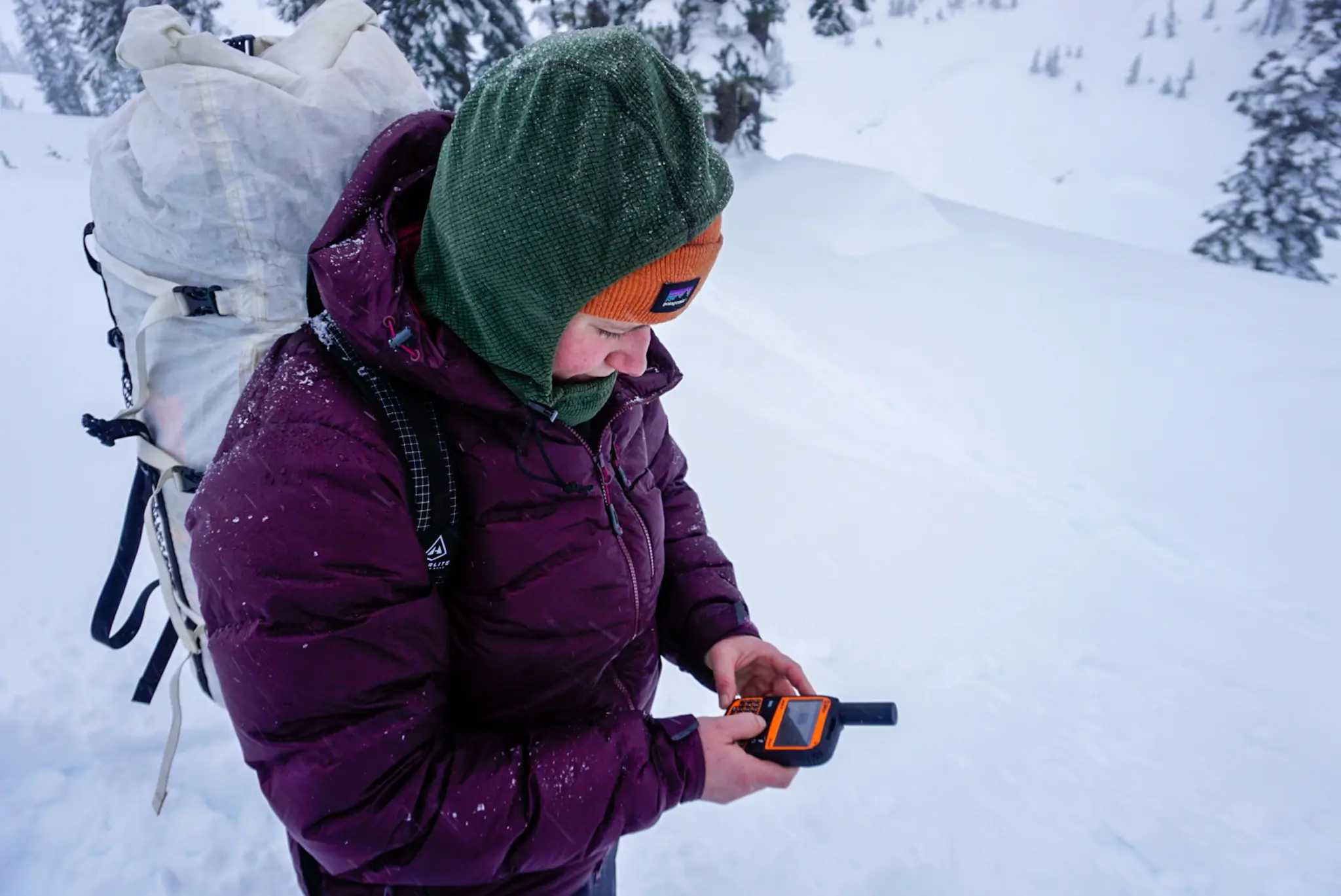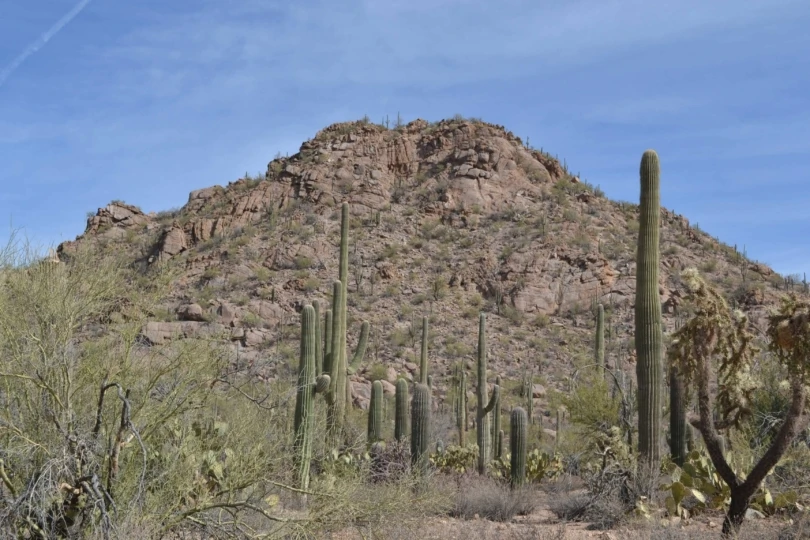The inReach has long been Garmin’s de-facto line of satellite communication devices. So, when Garmin rolled out the second generation of the inReach Mini, long-time users were excited. The inReach Mini 2 was juiced up with nearly everything on the wishlist: Support for four additional global satellite systems, a new higher-fidelity screen with a quicker refresh rate, and a longer battery life with USB-C charging, to name a few.
But Garmin wasn’t about to stop its inReach innovations there.
The inReach Messenger hit the scene this year, and it did so with a splash. Not so much because the inReach Messenger was built on the devices before it, but because the inReach Messenger is so vastly different from previous iterations. The square black form factor was one obvious diversion from the original design. However, Garmin also changed the way its new device sends and receives messages by adding cell service and Wi-Fi to the mix.
Both devices have the big red button to call in the cavalry if you need help. But most often, you’ll probably be using them to check in with friends and family members, to chat about post-hike dinner plans, or the particular voraciousness of the mosquitos at your camp last night.
As a long-time user of the inReach Mini series, my interest was piqued by the Garmin inReach Messenger. But the question stuck around — Who is this thing for?
In short: After numerous tromps in the hills recently testing both the inReach Mini 2 and the newer Messenger head-to-head, I’ve come to understand the niche that Garmin has carved out for the Messenger. This is the average person’s satellite messenger device. The Messenger makes messaging easier, it has a longer battery life and a better antenna, and it’s cheaper than other inReach devices. And because it taps into Wi-Fi and cell service when it can, users save those allotted satellite messages for when they really need them.
To see how the newest satellite messenger on the block stacks up against the rest of the market, check out GearJunkie’s Best Satellite Messengers Buyer’s Guide.
-
Messaging Ability
9.0
-
Feature Set
7.0
-
Battery Life
8.0
-
Durability
8.0
- Battery Life: 28 days
- Message Composition: On-device options/in-app
- Weight: 4 oz.
- Water Resistance: IPX7
- Satellite System: Iridium
- Subscription Plan: $14.99 per month for annual 'Consumer: Essential' plan
Pros
- Compact size and weight
- Access to global Iridium satellite network
- In-depth functionality
- Extended battery life with reverse USB-C charging
Cons
- Small screen for on-device typing
- Higher initial cost
Garmin inReach Messenger Review
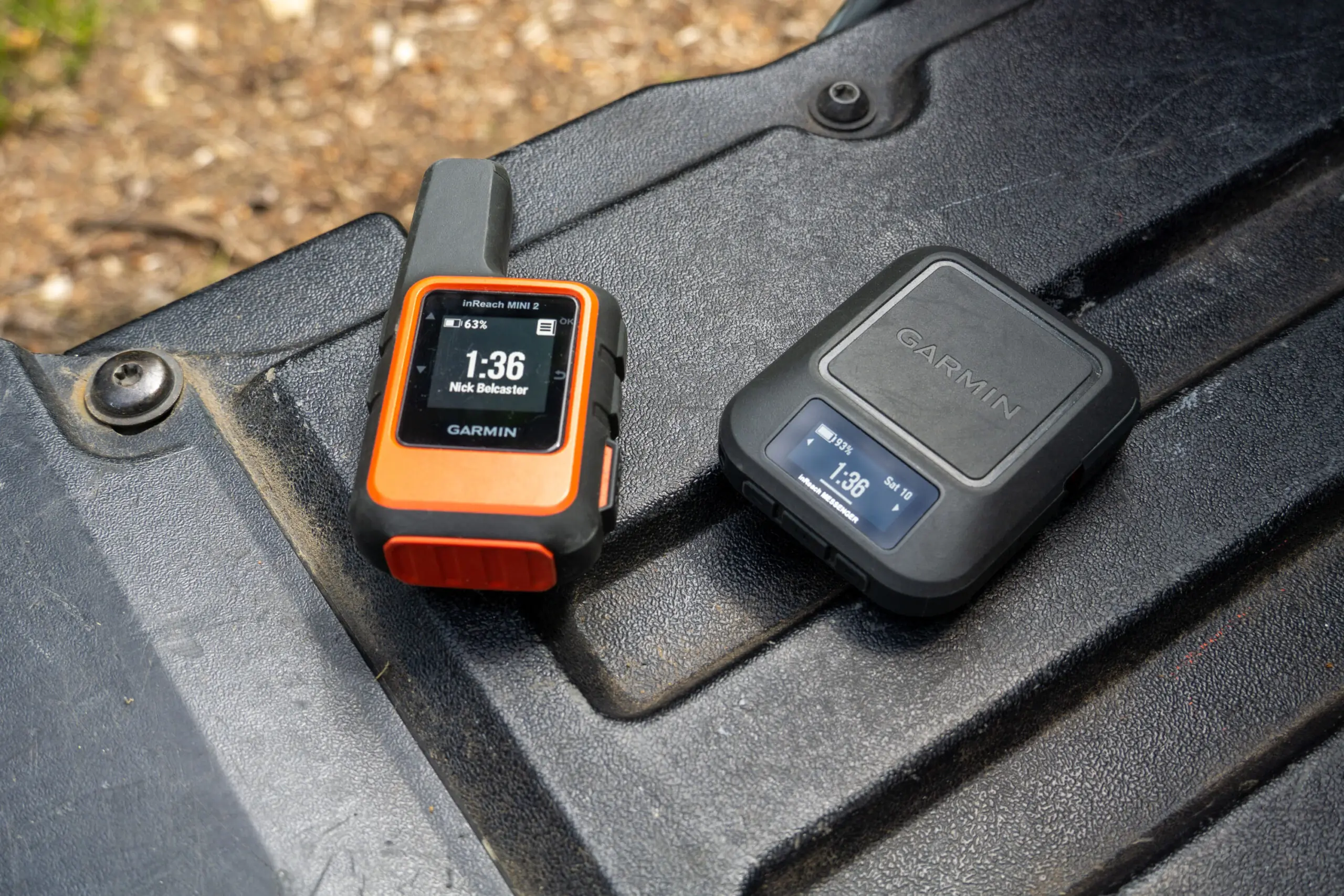
While both the Garmin inReach Mini 2 and Messenger provide some very similar satellite messenger functionality, the route they take to get there provides for two very different-looking pieces of kit.
The Messenger is hockey puck-esque. It could easily double as a killer skipping stone. The front sports a small display of the same caliber as the Mini 2. It has a high pixel count and crisp refresh rate that keeps things moving promptly as you roam through the menus.
The Messenger’s display offers access to the messages, tracking, weather, TracBack, and settings. You can scroll through them using the three buttons below the screen. The menu setup is nigh identical to that of the Mini 2, making navigation easy for those already familiar with the ecosystem.
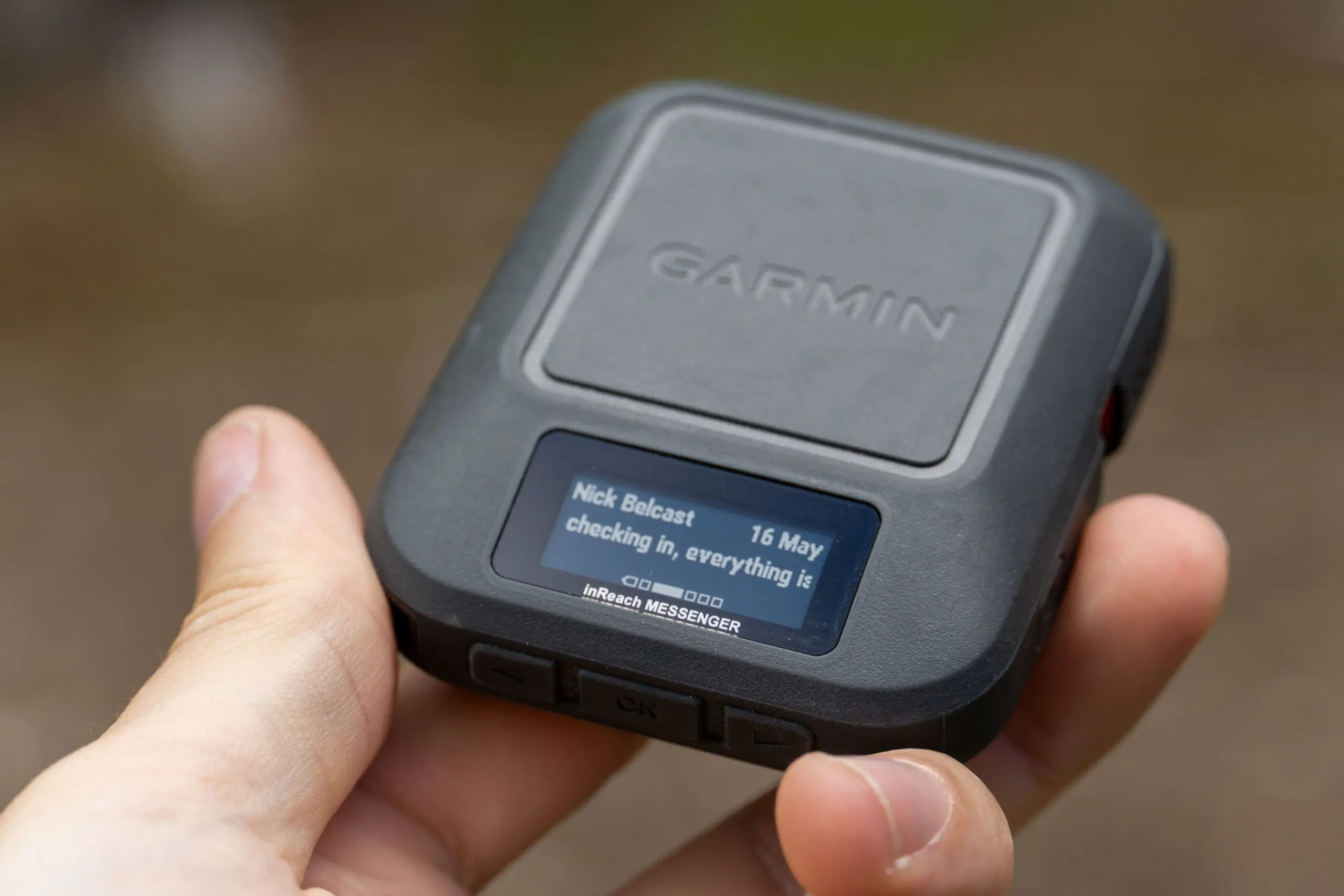



Messaging and Navigation
When it comes to messages, you’ve always got the failsafe option of clacking out a message on the device itself. That’s made moderately easier by a Quick Text feature, offering a slate of different prewritten messages to fire off quickly.
For lengthier missives, however, jumping over to the app is the way to go. Typing on a phone screen is far easier. (More on this later.)
So far as navigation goes, this is one area where the Garmin inReach Mini 2 and the Messenger differ significantly — and where the Mini 2 might have an edge over the newer model. The inReach Mini 2 has the ability to store waypoints, routes, and previously tracked routes on the device. The Messenger is a bit limited, by comparison. It only features the ability to track your route and enable TracBack routing, a feature that will point you back to your starting point.
The fact that the inReach Messenger won’t work with the Garmin Explore app also means that you won’t have access to the expanded mapping functionalities of that app. Though, it will send a link to your contacts with your Garmin MapShare account. That online map displays your location in (close-to) real time. For many users, that, in conjunction with sending the occasional “still alive” message, will be enough.
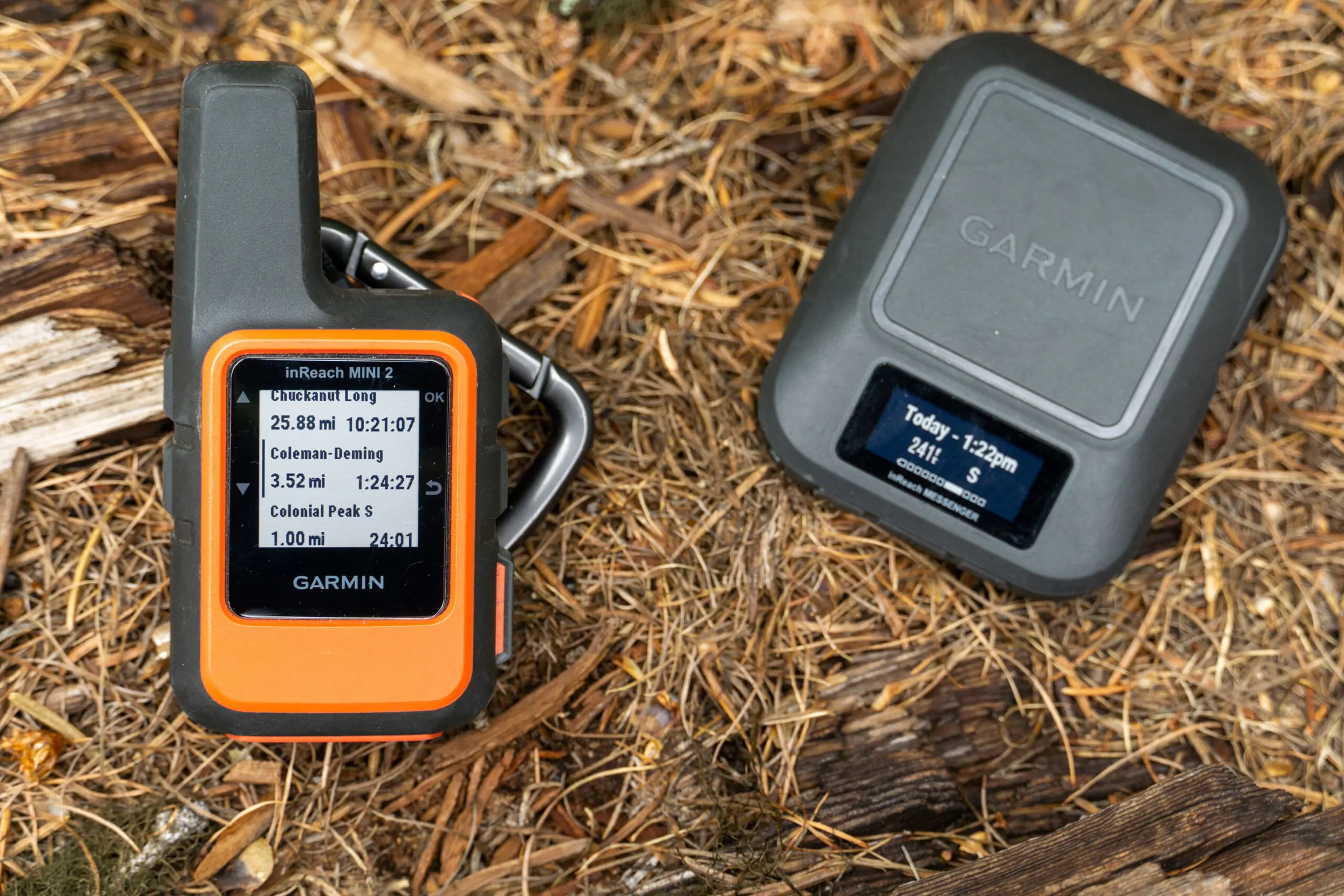



Better Satellite Connection
The antenna design on the inReach Messenger is also notably different from the helical antennas that project from other Garmin inReach-capable devices (including the GPSMAP, Montana, and Tread series). The inReach Messenger is a patch antenna. Without getting too far into the radio-nerd weeds, these antennas typically have higher gain, meaning they transmit more power to the receiving satellite.
In the field, I found the initial linkup with positioning to be quicker with the inReach Messenger. It also fired off messages faster than the Mini 2.
Because of its design, the Messenger will perform best facing upward. But in a rather bewilderingly un-Garmin move, there are currently no mounting solutions offered for the device. So, carrying the Messenger in the brain of your backpack is the easiest way to go. The device will operate equally well placed on the dash of your rig, but it may slide around.
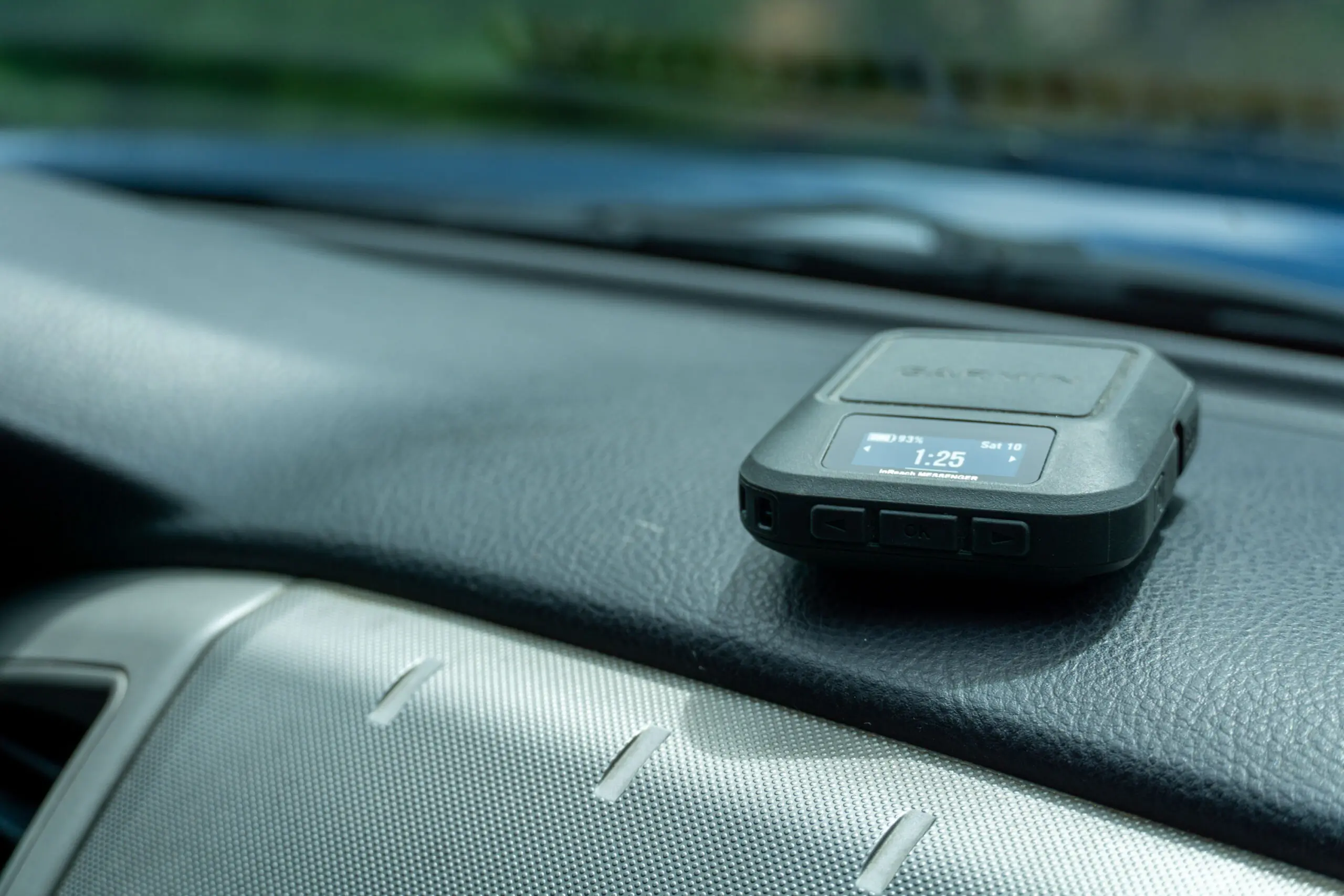



SOS Functionality
On the side of the device, the On/Off button is flanked by the SOS button. That important feature is protected by a rubberized flap to prevent accidental triggering.
Activating an SOS elevates your message in the Iridium satellite network to give it a priority. It’s sent to the Garmin Response Center; there, coordinators respond 24/7 to get emergency teams moving toward you.
During my time with the inReach Messenger, I gave in to the urge to test out the SOS functionality. I did so with a scheduled SOS test, so as not to actually call in rescuers. It had a lightning-fast response time, with the Response Center communicating directly with me on the app. I could easily and quickly relay important information related to any rescue that I might need.
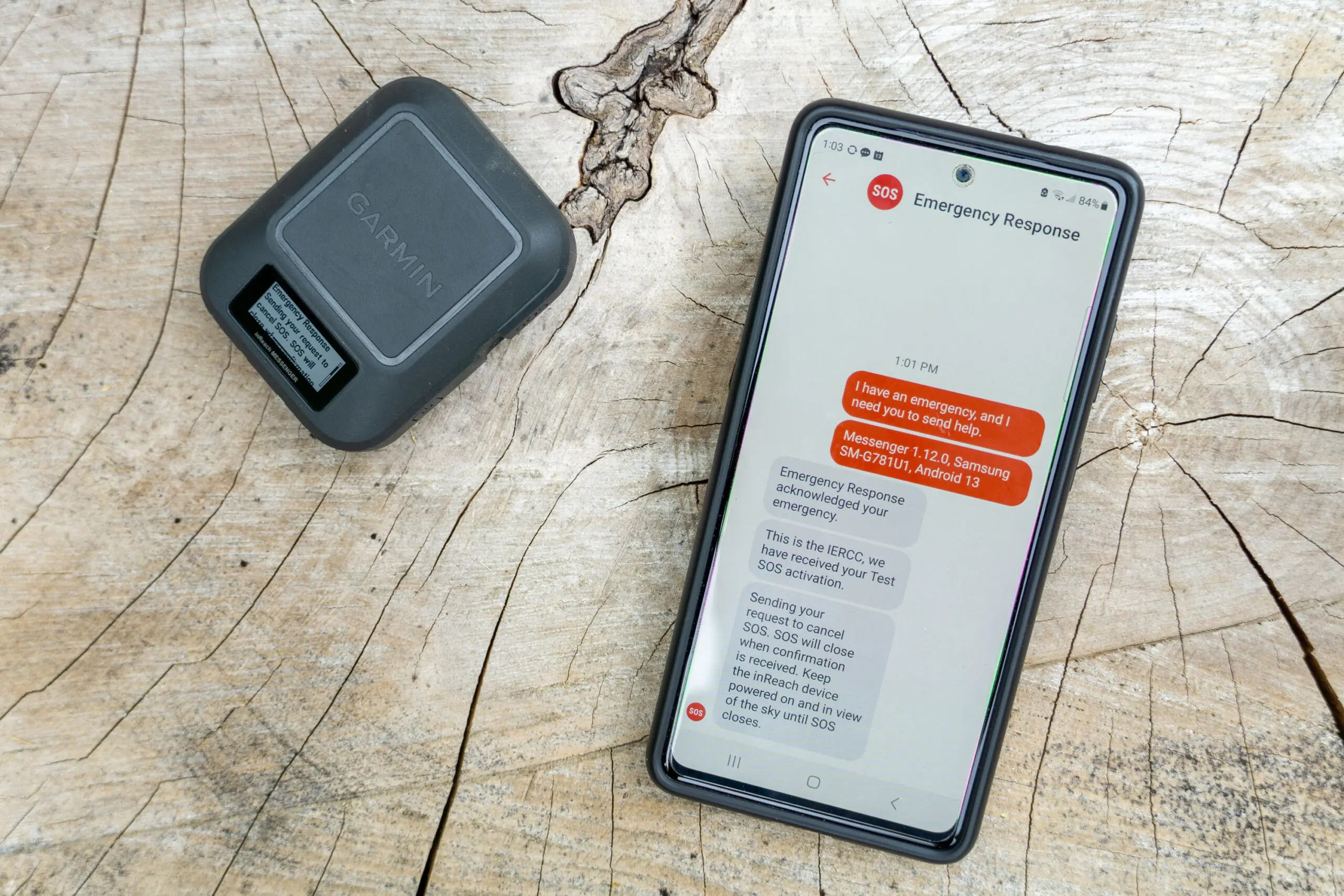



Double the Battery and Reverse Charging
The final selling point of the inReach Messenger over the Mini 2 lies its battery power. The Messenger has twice as much battery power, equating to 28 days of active use versus the 14 days offered by the Mini 2.
That extended battery life also allows for reverse charging, meaning you can top off any device in need using your inReach Messenger as an external battery charger. At first, this seemed alarming to me — your SOS device should be the last thing you want to pilfer power from. But when you understand the navigation abilities that the Messenger forgoes, it makes sense why you would want to be able to juice your phone and access the app.




There’s a New (Better) App for That
Arguably the biggest news when it comes to the Messenger device is its accompanying app (unsurprisingly, also named Messenger).
Garmin seems to have a particular penchant for cycling through applications. But the company has really made the grade here. And, incredibly, the GPS giant has gone with backward compatibility. So, the app is available to not only the inReach Messenger but also the Mini 2, as well as the GPSMAP and Montana series of devices.
The app picks up where the previous Garmin Explore app left off. It reduces the carpal tunnel-inducing typing necessary to scratch out a message on the device itself. You simply type your message directly onto your phone screen. Those messages are then shuttled to the device via Bluetooth, and the inReach Messenger fires them off skyward.
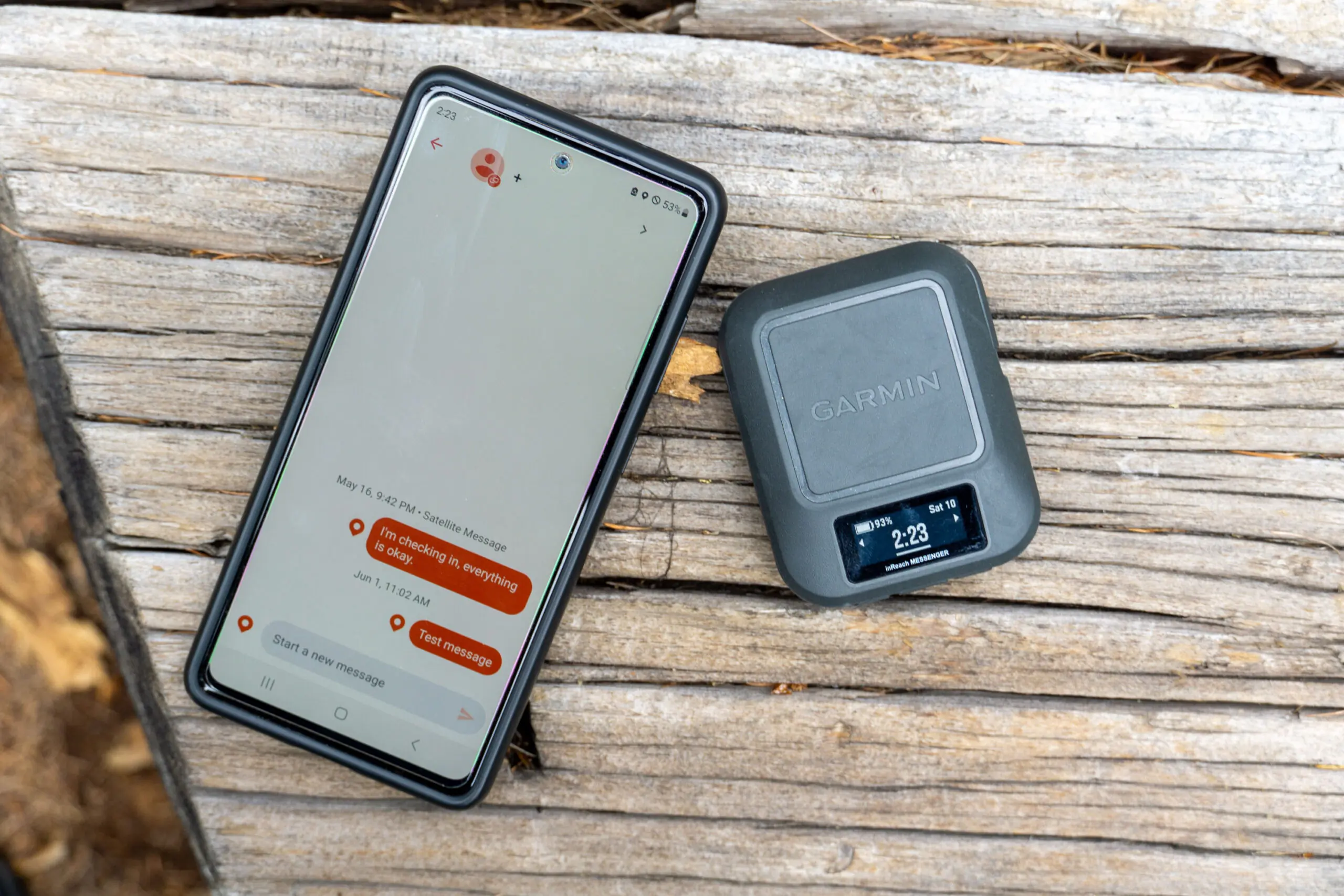



Test Messaging
The big difference with inReach Messenger, however, is that in addition to using satellites to move your messages, it will also use cell signals or Wi-Fi when available.
That means users can fire off messages often faster, and cheaper than using the allotted messages that come with your subscription — unless you’ve sprung for the unlimited Expedition level plan, which offers unlimited messages.
The app itself is responsible for this message meshing. There’s no cell service or Wi-Fi chip on board in the inReach Messenger.
During my recent forays into the hills above town, I sought to stress-test the messaging ability of the inReach Messenger against my experiences with the Mini 2. I found it to be a more streamlined process. Previously, I would have to fire off a quick text message to my partner en route to the trailhead. Then, I’d pivot to the sat comm device for the rest of the hike. The Messenger app, however, allows for a more seamless experience.
Sending messages through the app is simple. Contacts are pulled from both the device and the contacts already in your phone. These messages can also be sent to email accounts and used to post on Facebook or Twitter. Once a message has been sent, folks can respond to you, with messages appearing on both the inReach Messenger device and your phone.
The Mini 2 can also now utilize the Messenger app. There is one caveat: cycling between the Garmin Explore and Messenger apps is clunky with the Mini, requiring frequent signing in and out to get the devices happy with one another.
It’s tough to call either device the winner here. Instead, we’ll call the user the winner. The Messenger app is a great step forward for inReach-capable devices, and this tide lifts all ships.
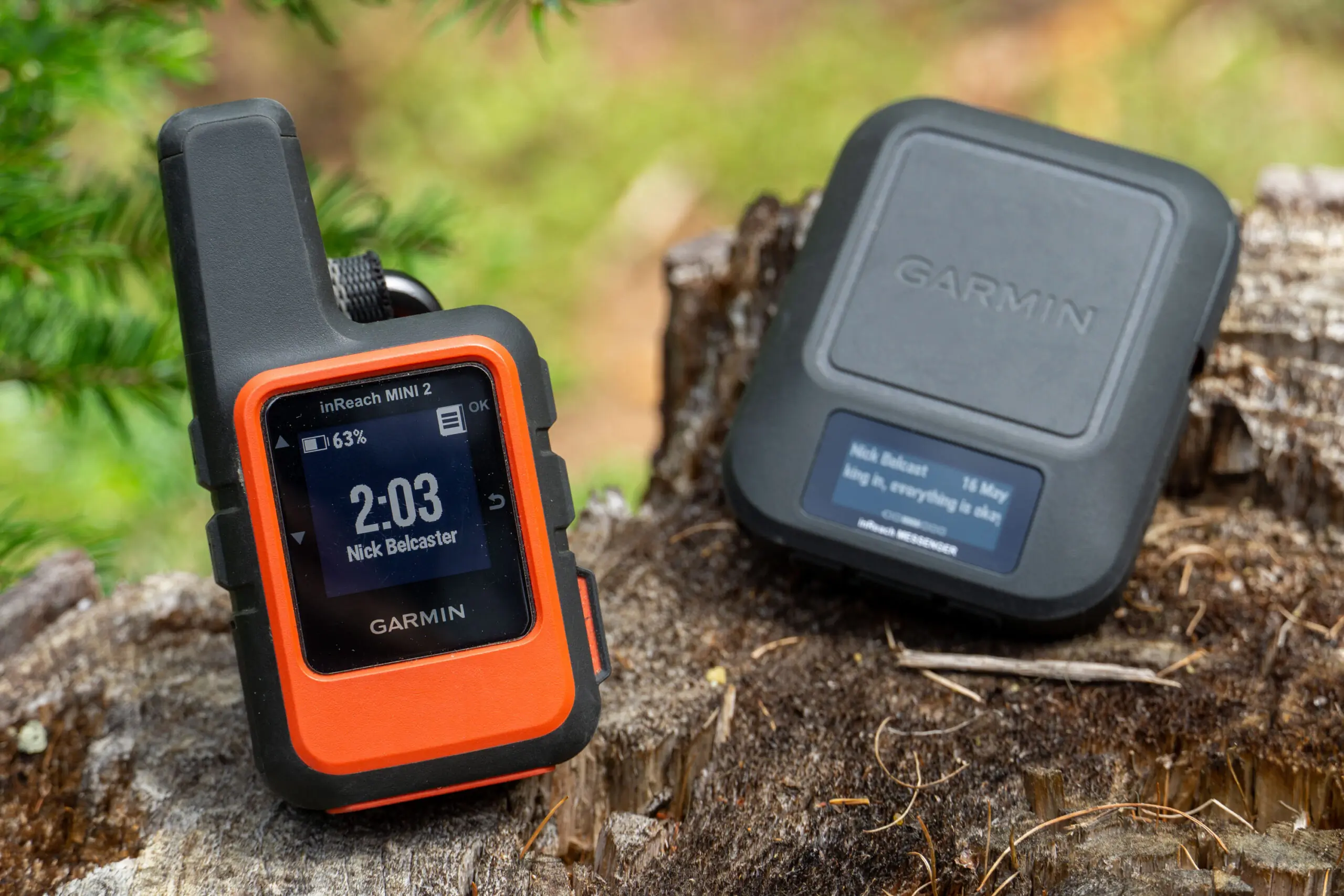



Who Is the Garmin inReach Messenger For?
For one, thru-hikers will benefit immensely from this device’s technology. It’s easy to imagine carrying conversations between trail towns and cell service, and deep into the backcountry. This would also cut down on burning through those precious subscription messages.
Second, anyone who saddles up in their rig for some overlanding is bound to see the utility in sending messages as they pass in and out of cell service. Obviously, you’ll need to fashion some type of dash-securing solution on your own, but the device does well enough clinging on for most trails. I’d imagine we’ll see a bevy of mounting solutions offered for the Garmin inReach Messenger shortly.
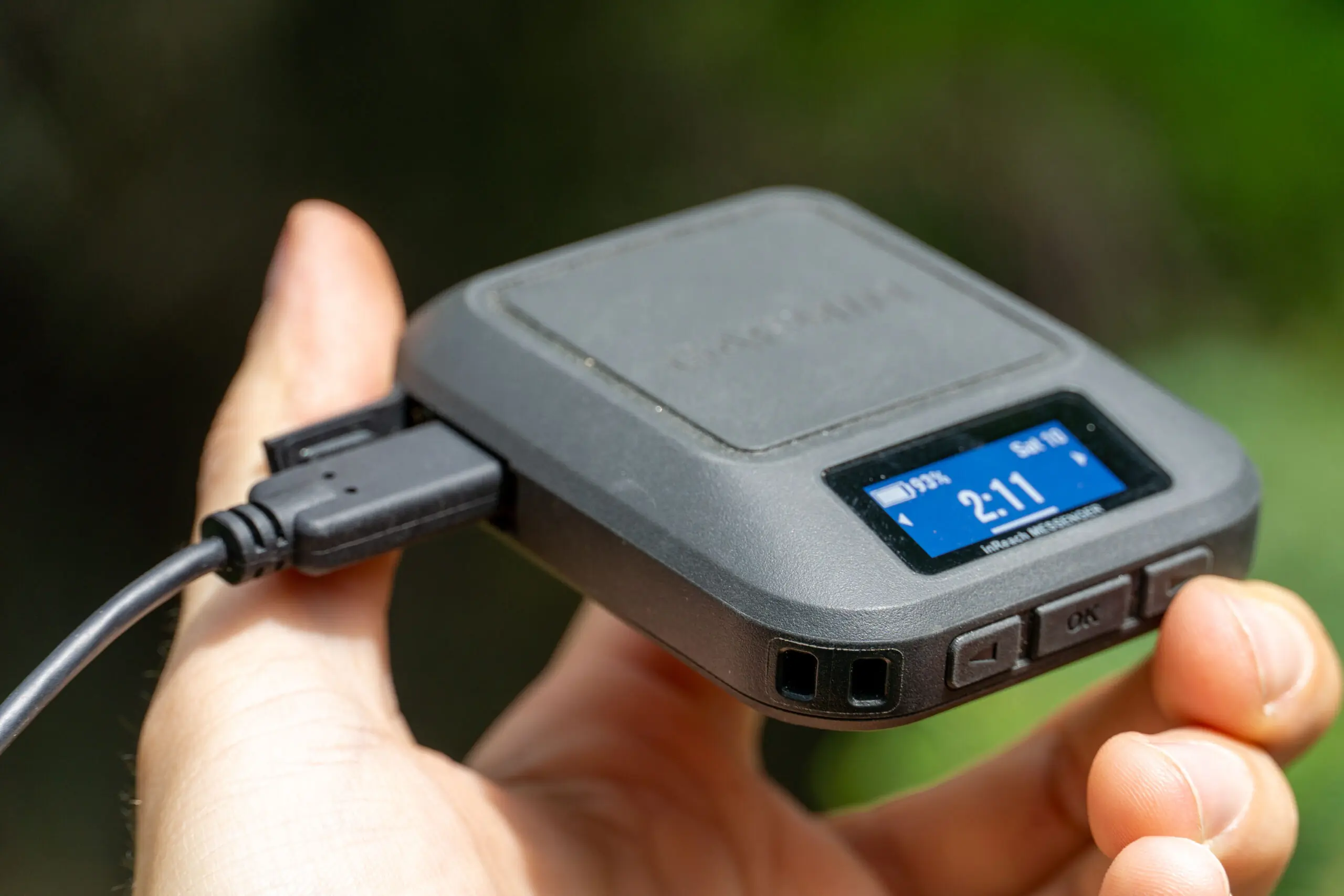



Guides (really, of any flavor) who need to report back to command after a day in the field will also benefit from the message-meshing abilities of the inReach Messenger. Fieldwork often passes between the front and the backcountry. The group messaging functionality will also find frequent use with this crowd, who often split groups up and need to coordinate later plans.
Finally, anyone who uses a phone will find the inReach Messenger useful. With phone navigation apps like Gaia, Caltopo, and Avenza muscling in on the standalone GPS market, it’s easy to see the need for on-device navigation abilities in satellite messengers going to the wayside — or, at least to the back drawer when it comes to doling out memory space.
Garmin inReach Messenger: The Final Word
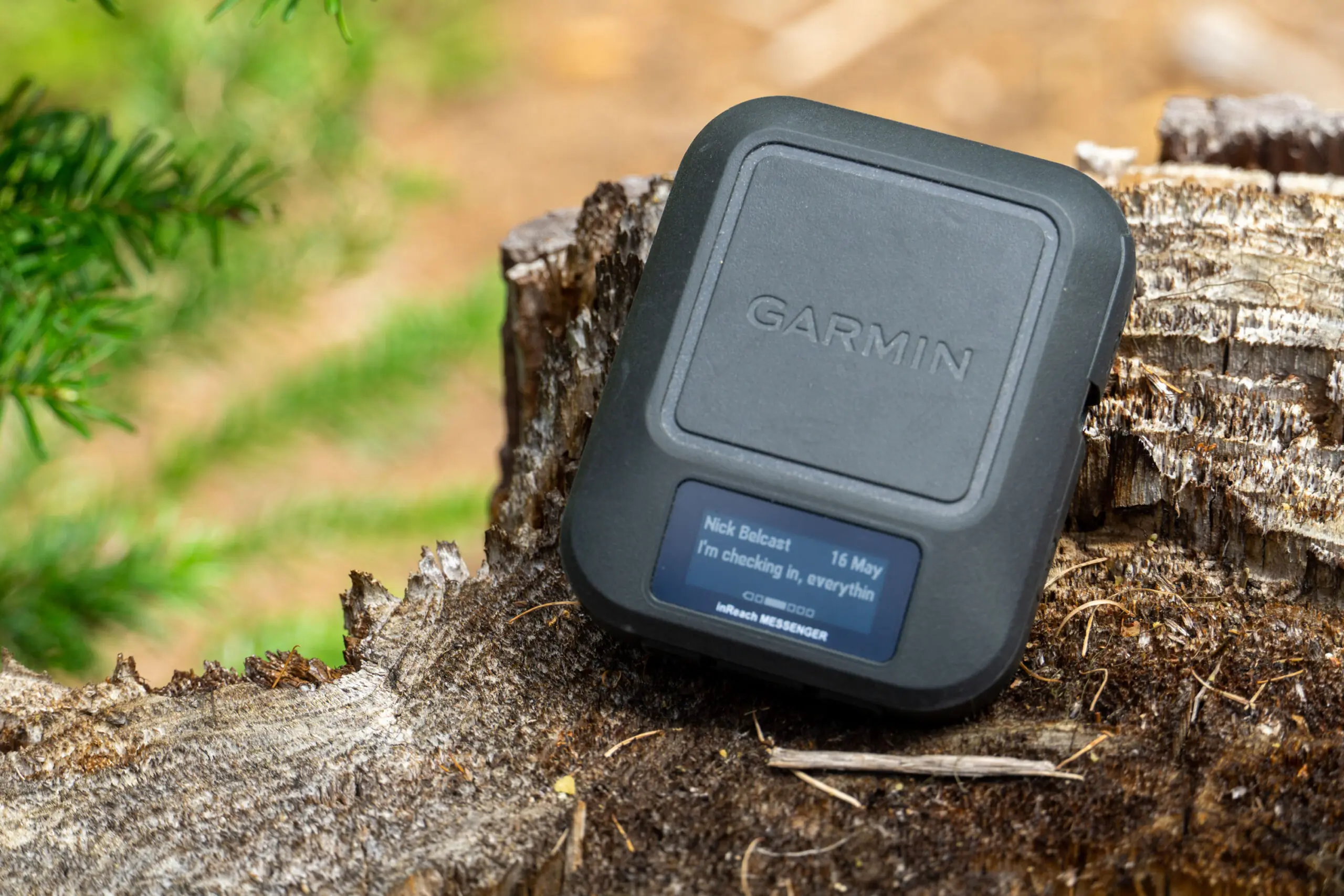



If you’re one who likes to have backups to your backups, then the inReach Mini 2 is probably a better device for you. The baked-in navigation abilities are only heightened by the accompanying Explore app, but can make it all on their own if push comes to shove.
Fourteen hours of “On” time is also generally going to be enough for most people, especially for those who bring some type of battery bank along on their outdoor adventures.
But for most folks, most of the time, the Garmin inReach Messenger just makes things easier. Your trade-off for the nav tools is an extended burn time, a slightly better antenna, and $100 still nestled in your wallet. And with the new Messenger app, communication is as easy as texting directly from your phone. If things turn ugly and you do need to hit that SOS button, simplicity is your best friend.
